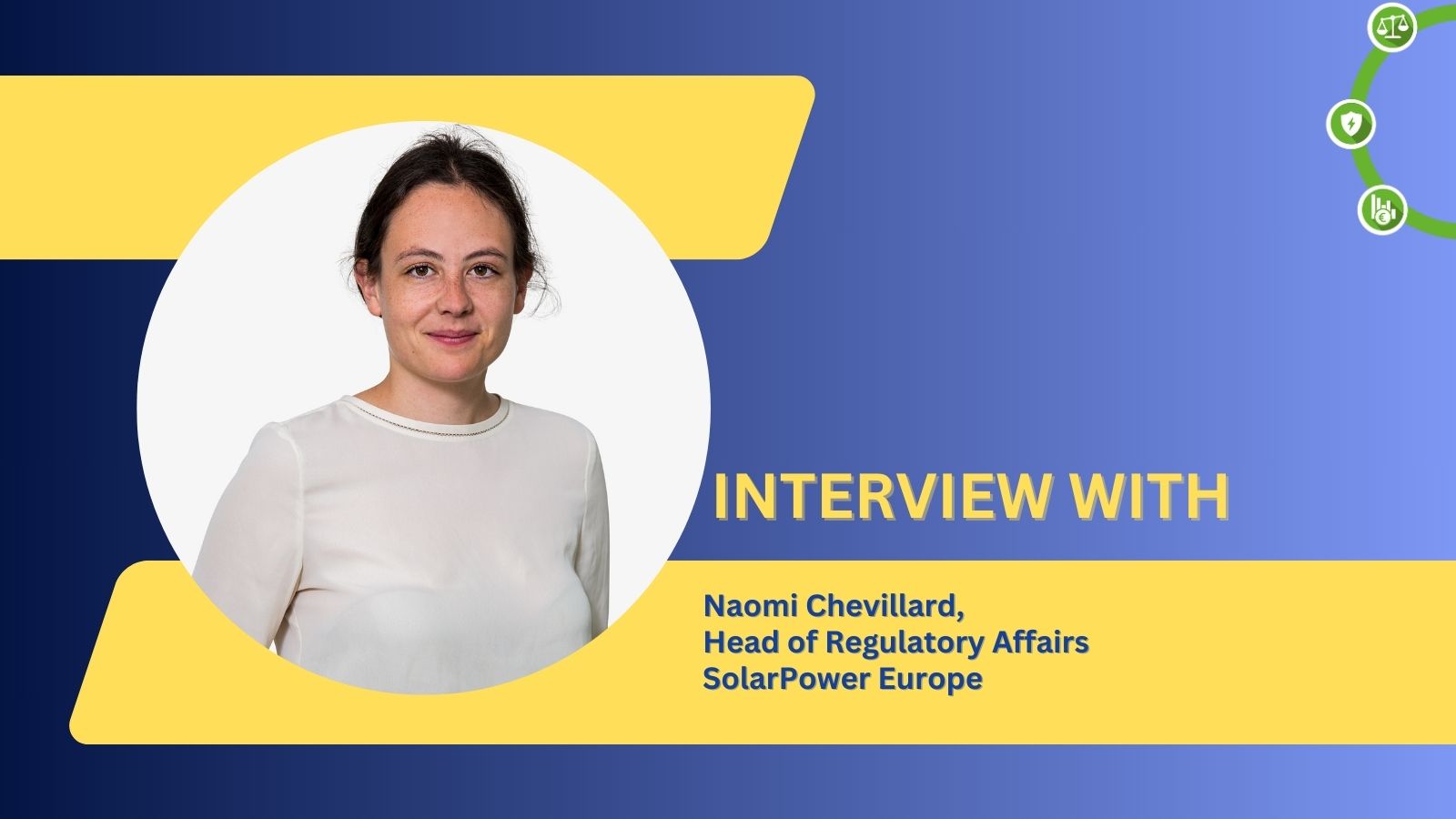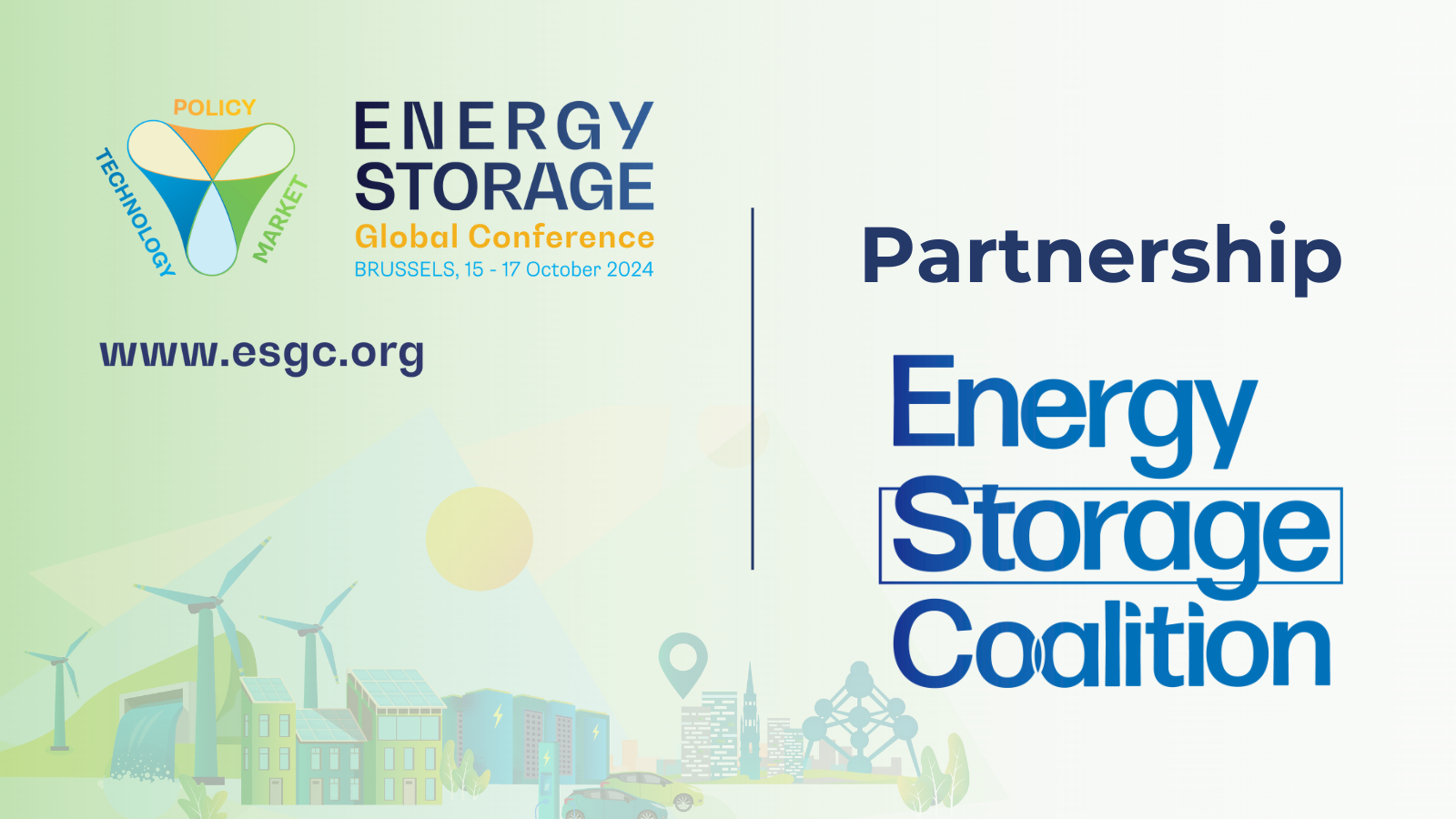Double charging perpetuates our reliance on non-renewable energy sources
 12
Sep
2023
12
Sep
2023
Welcome to an exclusive interview with Naomi Chevillard, the Head of Regulatory Affairs at SolarPower Europe.
In this interview, we delve into the vital role of energy storage in decarbonising the European energy system, look at the benefits of energy storage technologies co-located with solar PV and explore the negative effects of double charging on energy storage deployment.
Double charging is making prosumer battery storage completely uncompetitive compared to fossil fuels in flexibility markets.
Naomi Chevillard, Head of Regulatory Affairs
at SolarPower Europe
Hi Naomi, thank you for accepting this interview. Can you share with us, from SolarPower Europe’s point of view, how energy storage contributes to the decarbonisation of the European energy system, and what are the key benefits it brings to the table?
As highlighted in REPowerEU, energy storage is a solution to the urgent need to integrate renewable energies and electrified loads into the grid in the medium and long term. We estimate that to decrease Europe’s fossil fuel dependence, increase the efficiency of its energy system, avoid wasting renewable energies and allow more stable and lower energy prices we will need at least 200 GW of storage by 2030.
In this sense, Greece is a good example of what other European countries could do to foster decarbonisation by deploying more energy storage capacity. In 2022, the European Commission approved, under the COVID-Recovery and Resilience Facility, Greece’s plan of 341 million euros for 900 MW of grid-scale energy storage capacity to answer to the grid’s lack of capacity and better management of the renewables.
A net-zero energy system in Europe will require a wide range of different storage technologies. On the one hand, long-duration storage technologies – such as pumped hydro or thermal storage, which can both provide flexibility and stability for different time scale, in particular during those times of the year when variable renewable generation is lower. On the other hand, short-duration storage – such as battery storage, focused on daily flexibility to stabilise grids and match wind and solar generation profiles with end-user electricity demand.
Finally, it’s important not to think in a silo: a lot of energy storage will be co-located with solar PV, it’s not either or. It’s co-located battery storage in a building that supports the time matching of solar PV with the house’s power consumption, but it’s also large solar and storage plants that smoothen PV production and even provide flexibility services to the grid.
Why do you believe a better financial, legal, and political framework is needed to facilitate the deployment of energy storage technologies across Europe?
Why is quite simple: we are not deploying enough storage in Europe to meet the needs of 2030 and to cope with the gas crisis. But we are also lagging behind compared to other regions. Bloomberg’s Energy Storage Market Outlook has shown that battery storage deployment in Europe in the first Semester of 2023 is way slower than in US and China: the latter are both at 10 GW+ storage capacity installed in 2022, while Europe remains at a couple of GW, driven by the residential market.
Overall, the toolbox of measures needed to facilitate the deployment of energy storage across Europe is already available in the Clean Energy Package, but we need to use those tools. Specifically, it is very important to assess flexibility needs at the national level, so that flexibility price signals can be developed to respond to those needs. It’s also imperative to set a target for energy storage for investors to understand that the market is moving in the right direction.
Now, there are also a number of things that are still posing significant barriers to energy storage growth. For instance, double charging is making prosumer battery storage completely uncompetitive compared to fossil fuels in flexibility markets. And at higher voltage levels, the grid connection rules either to connect a solar and storage system to the grid or to add a storage system to an existing solar installation are not developed or facilitated enough.
Can you clarify to us what double charging for energy storage technologies entails and why you believe it is one of the main barriers to energy storage deployment?
Double charging fees occur when energy storage is considered both as a consumer and a producer of energy. This results in the service being charged both when energy is stored and again when it is re-injected to the grid to be consumed by the end-user. Double charging is, therefore, one major hurdle to the deployment of energy storage, that we must tackle.
Since double charging does not apply to fossil generators, it puts energy storage at a competitive disadvantage compared to fossil fuels for providing flexibility and security of supply. In other words, this charging model poses a significant financial burden on energy storage projects and perpetuates our reliance on non-renewable energy sources.
We already have examples of countries that have tacked this issue. In Ireland, for instance, public authorities identified double charging as a major barrier to achieving final investment decisions in energy storage and decided accordingly to cease generation-related charging to commercial energy storage providers, which had reached 25% of the total charges requested by the network operator.
This doesn’t mean that taxes won’t be paid on grid usage: taxes are paid when the electricity is purchased from or sold on the market – outside of flexibility services.
What recommendations would you provide to policymakers to align their efforts with the Energy Storage Coalition’s vision and facilitate the deployment of energy storage technologies in Europe?
It’s important to remove double charging. Germany has already understood this regulatory mistake, and removed double charging. In fact, the Clean Energy Package also already excludes double charging on prosumers, but the text wasn’t detailed enough and is not implemented in most EU countries.
We highly welcomed the proposal from a member of European Parliament to strengthen the safeguards against double charging and regret that it didn’t make its way in the final text. Until the law is corrected, the European Commission should raise that with Member States, in particular, while they examine the NECPs.
As we hear the European Commission drafts a possible action plan on grids, another quick win for the EU executive is making sure the grid connection rules are straightforward for hybrid solar and storage. Solar and storage make all the sense in the world, and the market is ready to grow this technology – but still, rules for grid connection are not clear and processes are burdensome and long when they don’t make it impossible to add battery storage retroactively to a solar asset.
Check out our campaign Breaking Barriers




